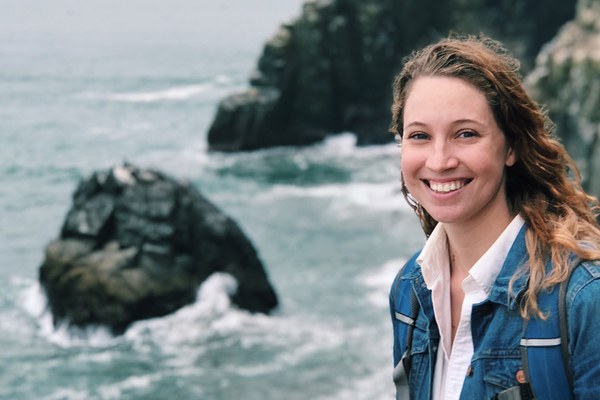Jo Osborn, PhD candidate in anthropology at the University of Michigan, is a junior fellow in Pre-Columbian Studies. Her research report, “The Development of Fishing Communities on the Peruvian Coast: New Insights from Excavations at Jahuay, Peru,” detailed archaeological evidence of economic specialization at Jahuay, an Early Horizon fishing village in Peru.
Q&A with Jo Osborn
What is unique about the Early Horizon coastal communities you study, such as Jahuay?
Forms of economic specialization among pre-Hispanic communities were described in sixteenth-century colonial documents and archaeological research, and my research on early Horizon communities explores how far back we can apply this economic model. An economy like this might have included dedicated fishing, labradores or agriculturists, and merchant communities that were interdependent and economically complementary but geographically and perhaps even linguistically separated. Communities might even have constituted separate ethnic identities.
I’m looking at the fishing village of Jahuay, a Topará community that existed from around 300 BCE until around 1 CE, some fifteen hundred years before the Spaniards who described this economic model arrived. It was about ten miles outside the Chincha Valley and was outside the irrigable zone, so not a lot of water available there, though it did have access to subterranean fresh water. Also, Jahuay was on the beach, so not much of the land there could have supported agriculture. But other features like its proximity to the ocean made it good for fishing, and topographical features created natural wind lines that sheltered people from the strong winds prevalent in the area while they worked. I’m trying to figure out if this specialized fishing community would have participated in economic networks similar to the ones early Spanish colonists observed later, where they would have depended on and maintained relationships with other specialized communities.
What has your archaeological excavation revealed about Jahuay’s economy?
My work shows the people who lived at Jahuay were very much focused on tapping into different types of maritime resources. They fished, hunted sea birds, and collected bivalve mollusks like clams and mussels. There’s even some evidence to suggest they might have hunted certain marine mammals like sea lions or dolphins. They produced locally a lot of the goods they needed to support this maritime economy—for example, we have found evidence of weaving and sewing tools that would have been needed to make cotton fishing nets.
Elsewhere on the site, we have found evidence that they dried the fish and mussels for long-term storage, and we have found storage pits where they would have kept these goods preserved in jars. We also think they transported goods to non-fishing sites in the region that were part of their network, shared those materials, and exchanged them for things they couldn’t produce in Jahuay, such as agricultural products. Cotton, for example, could not be grown on-site, nor gourds that they might have needed for their net floats, or food products in general. We found evidence at Jahuay that corn was part of their diet even though corn couldn’t be grown locally, and we also found ceramics but no evidence that they had their own ceramic production, so that would have all been brought in as well. Based on this archaeological evidence, it looks like there was some kind of economic interdependence between a fishing site like Jahuay and other sites in the region, forming an economic network.
How does this add to our understanding of pre-Hispanic societies?
Understanding how pre-Hispanic economies worked and their deeper history helps us understand more about the way Indigenous people in Peru made a living and how they built their societies. The history of this area did not begin just when people started writing things down, and taking a longer view of how certain phenomena, like this type of economic specialization, evolved and changed over time is something I’m interested in.
May Wang is postgraduate writing and reporting fellow at Dumbarton Oaks. Photo by Richard Tong, postgraduate digital media fellow.

